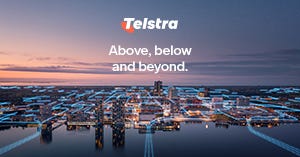UK's definition of 'premises passed' still hazy, despite focus on connections
UK fiber companies sharpen focus on connections, but issues over vague definitions of premises passed persist.

Fiber companies are fond of measuring their progress on network deployment by referring to "premises passed." This should, in simple terms, correspond to homes that can be easily connected to the network. In reality, however, the definition is often vague and can include premises where a lot of additional work is needed before a connection is ready.
In the absence of a standard definition, companies have devised metrics of their own. Some merely use distance as the deciding factor, without accounting for the presence of any insurmountable obstacles, such as a river between the cable and the premises, writes Mike Conradi, partner and co-chair for international telecom at DLA Piper, a law firm.
Openreach, the UK's biggest fiber company, did not respond to Light Reading's questions regarding the definition it uses for premises passed. But in 2019 it seemed to be using the following: "a Premise [sic] at which the occupier is able to order from the Customer in a reasonable time services which are the subject of Primary Use on terms and prices which are reasonably comparable to other fixed broadband services available to end users in the same Measurement Area." A lot seemed to hinge on what Openreach deemed reasonable.
For comparison, the EU has come up with a more concrete definition in its rules on state aid, which, among other things, state that "the provider of electronic communications networks and services shall be able to connect and activate the service at the specific premises within four weeks from the date of the request."
Still, there seems to be a greater drive to connect premises, as Ankit Agarwal, CEO of STL – one of the biggest fiber suppliers to several UK firms including BT – told Light Reading during an interview earlier this year. In the last 12 months or so, there has been a stronger focus on connecting homes – and generating money – rather than merely growing the numbers of premises passed, he said. This has been the case especially among altnets, as investors have started to place more emphasis on connections.
CityFibre, for example, has introduced a ready-for-service (RFS) metric, which it says means residents can receive services "in as little as 5 working days" from placing their order. As of January, the company said it had passed 2.5 million premises, with 2.2 million of those ready for service.
Hyperoptic – another UK altnet – meanwhile told Light Reading via email that "in dense urban areas (where we exclusively operate), the difference between homes passed and homes passed serviced/orderable is minimal in terms of distance (often no more than a few metres), and the barriers to acquiring a wayleave and completing the work are also minimal."
Serviceable or ready for service
Even so, issues persist further away from cities. Gigaclear, an altnet that operates in rural areas, told Light Reading via email that sometimes certain operators "appear to count premises passed as those that could be within reach of their network if they completed the build," adding that "those properties counted may never be made 'RFS' if there is insufficient demand from their location."
Gigaclear defines a location as RFS if "the premise has a tested, live fiber connection either at its boundary (the junction of its private land with the public land) or typically within 150m (the location of the nearest pole or chamber) and that property can place an order and be installed." Around 99% of such properties can be connected at no additional charge, it says.
For Gigaglear, a premises passed means that the network has been built to the property but is not yet serviceable. A gap between premises passed and RFS is "typically down to the flow of build where, for example, different contractor resources are performing the civil build works to the fiber installation and testing works."
While many altnets might be working to provide clearer definitions through the RFS metric, some in the industry have seemingly opted to go in the opposite direction. Virgin Media O2 (VMO2) has replaced the homes passed metric with a "homes serviceable" measure as of its first quarterly results of 2023.
In an emailed statement to Light Reading, the company defined the metric as follows: "Homes, residential multiple dwelling units or commercial units that can be connected to our networks that are technologically capable of providing two-way services (including video, Internet and telephony services) or partner networks with which we have a service agreement, where customers can request and receive our services, without materially extending the distribution plant. Certain of our Homes Serviceable counts are based on census data that can change based on either revisions to the data or from new census results."
Further, the operator said the term "will include premises which are already connected within the home so a customer could be simply sent a router to plug in, as well as those where the fiber runs nearby and our engineers would have to come up and bring the cable into the customer's property." The measure does not relate purely to fiber as it will also include the operator's hybrid fiber-coaxial (HFC) network.
Related posts:
— Tereza Krásová, Associate Editor, Light Reading
Read more about:
EuropeAbout the Author(s)
You May Also Like











